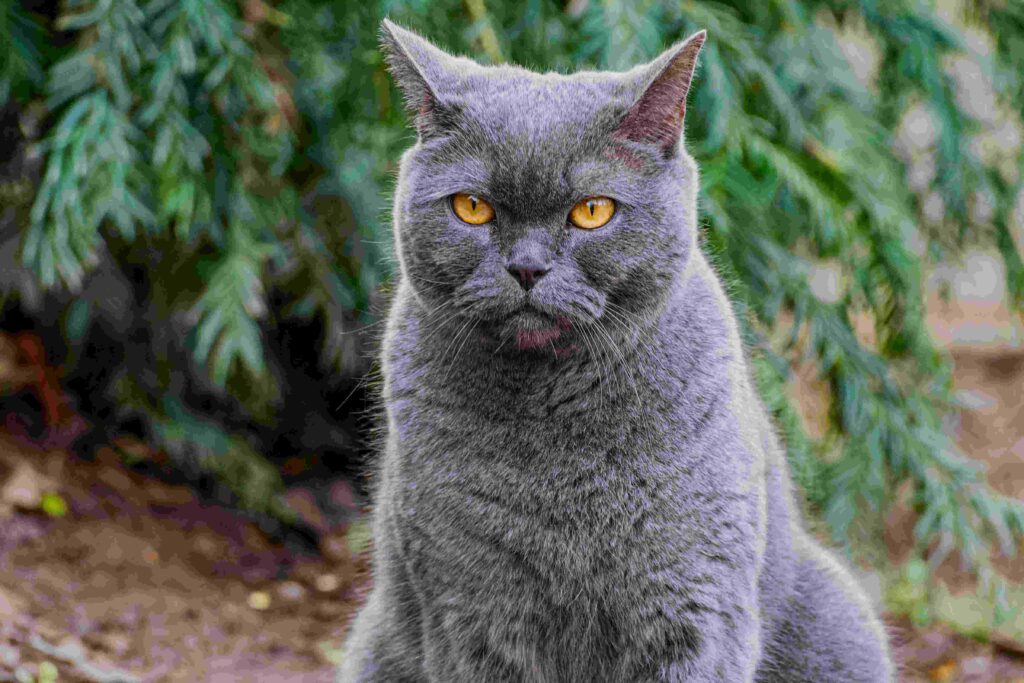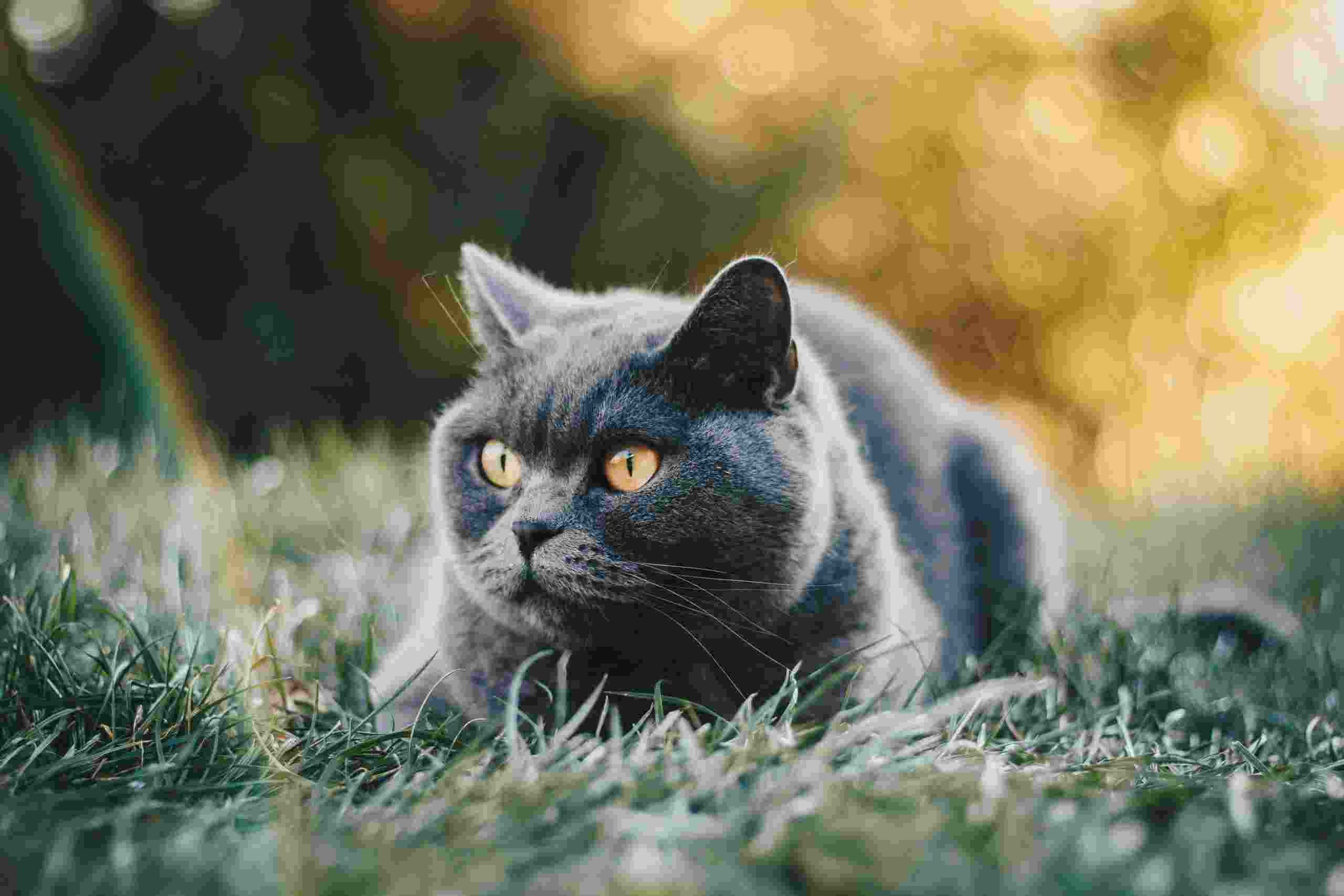In this article, we will explore whether British Shorthair cats tend to scratch furniture. British Shorthair cats are a popular breed known for their adorable appearance and affectionate nature. However, their scratching behavior can be a cause of concern for many cat parents. Understanding their instincts and providing appropriate outlets for their scratching needs is crucial to protecting your precious furniture.
British Shorthair cats are known for their strong claws and love for scratching. But fear not, as there are effective ways to manage and redirect their scratching behavior without resorting to drastic measures. By understanding their instincts and providing them with suitable alternatives, you can create a scratch-friendly environment and coexist peacefully with your feline friend.
Key Takeaways:
- British Shorthair cats are prone to scratching furniture due to their instincts.
- Understanding their behavior and providing them with a designated scratching post can help redirect their scratching habits.
- Training, using deterrents, and offering alternative surfaces are effective ways to manage and prevent scratching behavior.
- Proper nutrition and a scratch-friendly environment play a crucial role in averting furniture damage.
- By addressing their scratching needs, you can ensure a harmonious living environment for both you and your British Shorthair cat.
Understanding British Shorthair Cats’ Behavior and Instincts
When it comes to scratching, British Shorthair cats have instincts that can be attributed to their breed characteristics. Understanding these behaviors is crucial for providing them with the appropriate outlets to scratch and ensuring the protection of your furniture.
Why do cats scratch?
Cats scratch for various reasons. It serves as a way for them to exercise and stretch their muscles, maintain their claws’ health, mark their territory, and relieve stress. Scratching is an innate behavior that cannot be fully eliminated, but it can be redirected.
The importance of a designated scratching post
Providing your British Shorthair cat with a scratching post is essential. It offers them a dedicated place to scratch, redirecting their natural behavior away from your furniture. When choosing a scratching post, opt for a sturdy and tall one that allows your cat to fully extend their body while scratching.
Influences of breed characteristics
The British Shorthair breed is known for its strong and muscular physique. Their powerful claws require appropriate outlets for scratching. Neglecting their scratching needs can result in frustration and potential damage to your furniture. By understanding their breed tendencies and providing appropriate scratching surfaces, you can encourage positive scratching behavior.
Benefits of a scratching post for British Shorthair cats:
- Reduces the likelihood of furniture damage
- Allows cats to stretch and exercise their muscles
- Provides a designated territory for marking
- Helps alleviate stress and anxiety
“A scratching post is not just a piece of furniture; it is an essential tool for maintaining your cat’s wellbeing and protecting your home.” – Dr. Samantha Collins, Feline Behavior Specialist
Understanding the behavior and instincts of British Shorthair cats related to scratching is pivotal in creating a harmonious environment for both you and your feline companion. By providing a suitable scratching post and considering their breed characteristics, you can safeguard your furniture and promote healthy scratching habits in your British Shorthair cat.
| Behavior | Potential Causes | Prevention Strategies |
|---|---|---|
| Scratching furniture | Lack of a suitable scratching post | Provide a sturdy scratching post and redirect their behavior |
| Marking territory | Unfamiliar scents or new objects in the home | Introduce familiar scents and create a stable environment |
| Excessive scratching | Stress or anxiety | Address the underlying causes and provide enrichment activities |

Managing and Preventing Scratching Behavior
When it comes to British Shorthair cats, their innate desire to scratch is simply a part of their natural behavior. However, as cat parents, it is our responsibility to provide them with appropriate outlets for this instinctual behavior, while also protecting our furniture and belongings. Here, we will discuss effective strategies to manage and prevent scratching behavior in these untamed feline friends.
1. Introduce a Suitable Scratching Post
One of the most important steps in managing scratching behavior is to provide your British Shorthair cat with a good-quality scratching post. Choose a sturdy post made from materials such as sisal or carpet, as these allow for effective paw sharpening. Place the scratching post near their favorite furniture, making it a more enticing alternative.
2. Use Deterrents
If your cat continues to target your sofa or other furniture, consider using deterrents to deter them from scratching. These can include double-sided sticky tape, aluminum foil, or even spraying catnip on the scratching post to attract them to the desired area. Remember, consistency and patience are key when training your cat to redirect their scratching behavior.
3. Offer Alternative Scratching Surfaces
Your British Shorthair may have a preference for certain textures or angles when scratching. Experiment with different scratching surfaces, such as vertical or horizontal scratching boards, to find what they prefer. By offering a variety of options, you can help satisfy their scratching needs without damaging your furniture.
4. Provide Proper Nutrition
Believe it or not, a proper diet can also play a role in managing scratching behavior. Ensure that your British Shorthair receives a well-balanced and nutritious diet that meets their specific needs. A diet rich in essential fatty acids can help support healthy skin and minimize skin irritations that may lead to excessive scratching.
5. Create a Scratch-Friendly Environment
In addition to providing a scratching post, make sure to create a scratch-friendly environment for your cat. This can include adding multiple scratching surfaces throughout your home, such as scratching mats or cat trees. Creating a space that makes your cat feel safe and comfortable will encourage them to use the designated scratching areas.
By implementing these strategies, you can avert a scratching catastrophe and maintain harmony in your home. Remember, understanding your British Shorthair’s instincts and needs is crucial in preventing unwanted damage to your furniture while ensuring their well-being.
Conclusion
To conclude, British Shorthair cats, like many other indoor cats, have an instinct to scratch. Understanding their behavior and addressing their scratching needs is essential for both their well-being and the protection of your furniture.
By providing British Shorthair cats with appropriate scratching surfaces, such as a high-quality scratching post, you can redirect their scratching behavior away from your furniture. Encourage them to use the scratching post by using positive reinforcement techniques, such as treats and praise.
In addition to training, you can also take preventive measures to safeguard your furniture. Trim your cat’s claws regularly to minimize the potential damage caused by scratching. Use soft plastic caps or nail covers to further protect your furniture from scratches.
Remember, British Shorthair cats are less likely to scratch furniture when they feel safe and comfortable in their environment. Create a cat-friendly space by providing toys, vertical scratching posts, and cozy hiding spots. This will not only help prevent destructive scratching but also enhance their overall well-being.
FAQs
Q: Do British Shorthair Cats Scratch Furniture?
A: Yes, British Shorthair cats have an instinct to scratch and may indeed scratch furniture if not provided with appropriate scratching posts or boards.
Q: What is the best way to avert a scratching disaster with British Shorthairs?
A: To prevent your British Shorthair from scratching your furniture, make sure to provide them with a good scratching post or board that they enjoy using. Train your cat to use the scratching post by rewarding them when they use it.
Q: Can British Shorthair cats be trained not to scratch furniture?
A: While it may be challenging, British Shorthair cats can be trained not to scratch furniture with patience and consistency. Providing them with appropriate scratching alternatives and positive reinforcement can help redirect their behavior.
Q: Can loneliness or neglect lead British Shorthairs to scratch furniture?
A: Cats, including British Shorthairs, may exhibit destructive behavior like scratching when they feel lonely or neglected. Providing your pet with affection, playtime, and a stimulating environment can help prevent such behaviors.
Q: How can pet owners protect their furniture from British Shorthair scratches?
A: To protect your furniture from British Shorthair scratches, consider using cat-proof furniture covers, providing enticing scratching alternatives, keeping your cat’s claws trimmed, and creating a comfortable and enriching environment for your pet.
